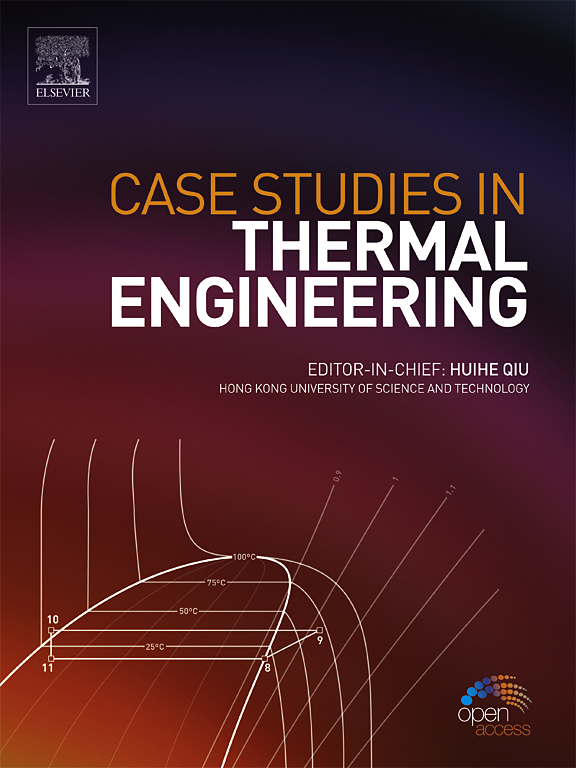Transient heat transfer analysis of airflow in a thermal water-bearing tunnel considering airflow turbulence and surrounding rock seepage effects
IF 6.4
2区 工程技术
Q1 THERMODYNAMICS
引用次数: 0
Abstract
In deep tunnels traversing fractured water-rich strata, surface water descend, heats up at depth, and then rises into the tunnel, resulting in a ‘thermal water-bearing’ tunnel. This paper investigates the transient temperature evolution of such tunnels through laboratory-scale model experiment and numerical simulation, considering the convective heat transfer of thermal water in the surrounding rock. The experimental model was designed using similarity criteria derived from the equation analysis method. The 3D numerical model simulates the interaction between thermal water-saturated surrounding rock and tunnel airflow. The thermal field of the surrounding rock accounts for the coupling effects of the flow field, which follows Darcy's law. The tunnel airflow is governed by the RANS (Reynolds-Averaged Navier-Stokes) equations and the考虑气流湍流和围岩渗流影响的含水热隧道气流瞬态换热分析
在穿越裂隙富水地层的深层隧道中,地表水下降,在深处加热,然后上升到隧道中,形成“含热水”隧道。本文通过室内模型试验和数值模拟,考虑了围岩中热水的对流换热,研究了此类隧道的瞬态温度演化规律。采用由方程分析法导出的相似准则设计实验模型。三维数值模型模拟了饱和热水围岩与巷道气流的相互作用。围岩的热场反映了流场的耦合效应,符合达西定律。隧道气流由RANS (reynolds - average Navier-Stokes)方程和k−ω湍流模型控制,并结合LRNM (Low-Reynolds Number Modeling)方法进行近壁处理。该方法与能量平衡方程结合计算气流温度。利用灌浆隧道壁和气流温度的实验监测数据对数值模型进行了验证。最后,对未灌浆和灌浆隧道进行了参数研究,验证了灌浆通过阻断热水控制气流温度的有效性。
本文章由计算机程序翻译,如有差异,请以英文原文为准。
求助全文
约1分钟内获得全文
求助全文
来源期刊

Case Studies in Thermal Engineering
Chemical Engineering-Fluid Flow and Transfer Processes
CiteScore
8.60
自引率
11.80%
发文量
812
审稿时长
76 days
期刊介绍:
Case Studies in Thermal Engineering provides a forum for the rapid publication of short, structured Case Studies in Thermal Engineering and related Short Communications. It provides an essential compendium of case studies for researchers and practitioners in the field of thermal engineering and others who are interested in aspects of thermal engineering cases that could affect other engineering processes. The journal not only publishes new and novel case studies, but also provides a forum for the publication of high quality descriptions of classic thermal engineering problems. The scope of the journal includes case studies of thermal engineering problems in components, devices and systems using existing experimental and numerical techniques in the areas of mechanical, aerospace, chemical, medical, thermal management for electronics, heat exchangers, regeneration, solar thermal energy, thermal storage, building energy conservation, and power generation. Case studies of thermal problems in other areas will also be considered.
 求助内容:
求助内容: 应助结果提醒方式:
应助结果提醒方式:


